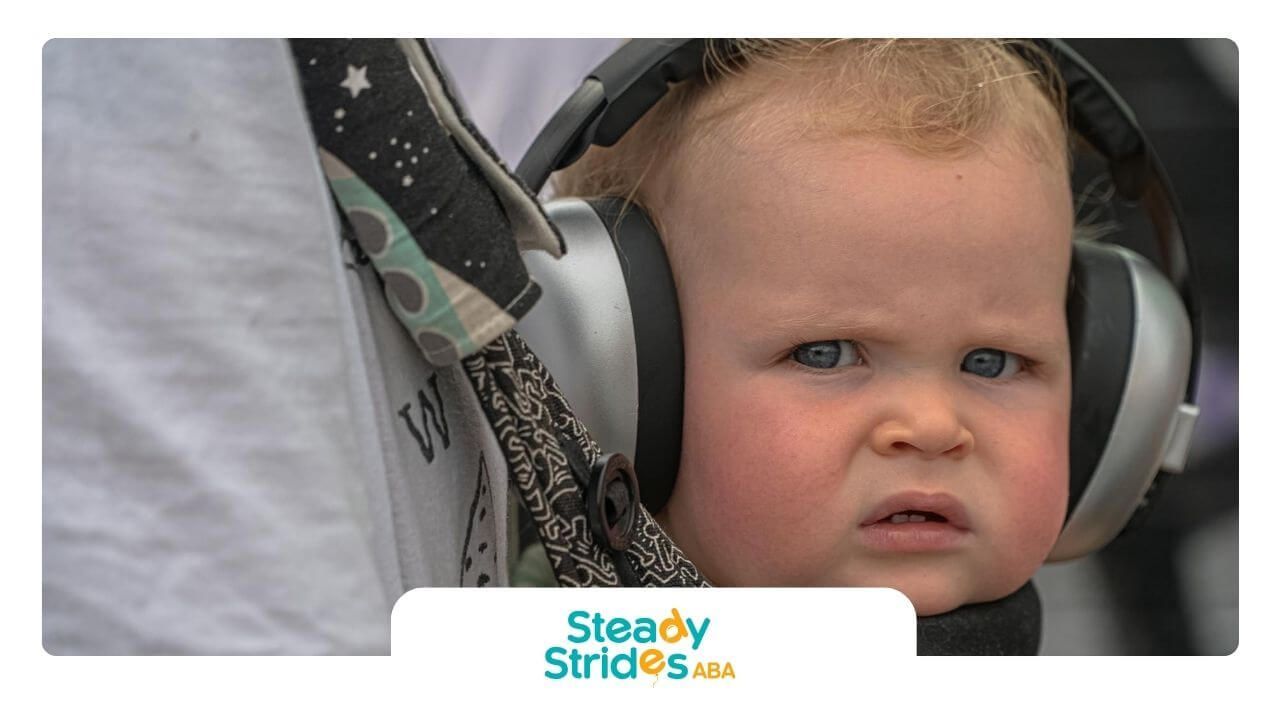About one in 59 children in the U.S. receive an autism diagnosis. For families seeking effective support, pediatric ABA therapy programs offer a structured path to boost communication, social skills, and daily living routines. Applied behavior analysis has earned backing from the US Surgeon General and the American Psychological Association as an evidence-based approach. Early access to tailored ABA services can change developmental trajectories and lay a strong foundation for lifelong learning. This guide helps parents, educators, and clinicians compare key features, teaching strategies, program settings, and outcome measures across top pediatric ABA offerings. By exploring credentials, service models, and progress tracking, readers will gain the confidence to select a program tailored to each child’s unique needs.
Understanding Pediatric ABA Therapy
Defining Applied Behavior Analysis
Applied behavior analysis focuses on observing and measuring behavior, then applying systematic methods to teach new skills. It breaks complex tasks into manageable steps, uses reinforcement to encourage desired responses, and relies on careful data collection. Early work by Ole Ivar Lovaas showed that intensive ABA could lead nearly half of participating children to reach typical intellectual functioning, compared to only 2 percent in control groups. Today’s pediatric services build on those principles with individualized assessments and outcome tracking.
Why Early Intervention Matters
What makes early support so critical for young learners? Brain plasticity peaks in preschool years, making those earliest sessions prime opportunities for skill building. A scoping review found improvements across seven of eight outcome measures after ABA intervention, though no studies measured quality of life directly. Even among children with the lowest baseline adaptive skills, each additional year in ABA corresponded with a 4.46-point gain on an adaptive behavior composite score. Starting therapy before age five often yields the largest gains in communication, social interaction, and daily living skills.
Key Program Components
Board Certified Behavior Analysts
Top programs employ Board Certified Behavior Analysts (BCBAs) to design and oversee each child’s plan. Earning a BCBA credential requires a master’s degree, supervised fieldwork, and passing a certification exam. Some providers also work with Board Certified Assistant Behavior Analysts (BCaBAs), who hold bachelor’s degrees and implement interventions under BCBA supervision. Continuing education units keep both roles current on new research and ethical standards.
Individualized Treatment Plans
Quality pediatric services begin with a detailed assessment that pinpoints strengths and areas for growth. Goals might target communication skills, social play, self-help routines, or reducing challenging behaviors. Behavior contracts can help older children stay motivated, using token systems or gold tokens to earn larger rewards. Plans evolve as data reveal which strategies work best.
Family and Caregiver Training
A critical piece of any pediatric ABA offering is family involvement. Therapists train parents and caregivers on techniques like prompting, reinforcement, and fading support. Consistency across home and therapy settings reduces confusion and helps skills generalize more quickly. Families often join weekly sessions to practice new strategies with guidance from their BCBA.
Data-Driven Decision Making
ABA relies on continuous data collection to guide progress. Many programs use A-B-C analysis, recording antecedent, behavior, and consequence, to uncover the function of challenging actions. Session notes, graphs, and regular progress reports keep everyone aligned on goals and help teams adjust plans in real time.
Core ABA Techniques
Reinforcement Strategies
Positive reinforcement adds a preferred item or activity after a desired behavior, boosting its future occurrence. Negative reinforcement removes an aversive event to strengthen behavior. Both methods hinge on consistency, random or mixed signals can confuse a child and slow progress.
Discrete Trial Training
Discrete trial training (DTT) teaches one skill at a time through clear instruction, child response, and immediate consequence. This drill-style method works well for foundational tasks like matching, labeling, or following simple commands. Data from each trial show when to move on or revisit earlier targets.
Natural Environment Teaching
Natural environment teaching (NET) embeds learning in daily routines—grocery shopping, playtime, or snack breaks. By teaching skills where they’ll be used, therapists boost generalization and keep sessions engaging. For visual learners, video modeling may show a target skill in action, which the child then imitates in real life.
Video Modeling and Prompting
Video modeling taps a child’s visual strengths by presenting recorded examples of social interactions or daily routines. Prompting and fading supports guide the learner initially, then gradually withdraw cues so skills become independent. This blend of support and challenge builds confidence and competence over time.
| Technique | Description | When to Use |
|---|---|---|
| Positive/Negative Reinforcement | Adding or removing stimuli to shape behavior | Across all skill areas |
| Discrete Trial Training (DTT) | One-step instructions with immediate feedback | Teaching new or discrete academic skills |
| Natural Environment Teaching | Learning within real-world routines | Generalizing skills to home and community |
| Video Modeling & Prompting | Visual demonstrations with guided cues | Social-communication and self-help targets |
Service Settings Overview
Clinic-Based Programs
Clinics offer highly structured environments with one-on-one sessions and a full team of BCBAs and behavior technicians. This setting suits families seeking consistent routines and direct supervision, but it may require travel and set appointment times.
Home-Based Services
In-home therapy brings ABA into everyday life. Therapists coach families on the spot, helping children learn within natural contexts. Home-based models often accelerate generalization but depend on parent availability and a conducive home environment.
School-Based Intervention
Many pediatric programs partner with schools to embed ABA supports into the typical school day. Collaboration with teachers and special education staff helps transfer skills to academic and social settings. These services may involve push-in support or pull-out sessions.
Telehealth Options
Remote delivery via secure video platforms can increase flexibility and access, especially in rural areas. Telehealth sessions may focus on caregiver coaching or direct child interaction. While it can’t replace hands-on guidance fully, virtual ABA has shown promise in maintaining progress when in-person options are limited.
Advantages:
Structured routines, team support.
Considerations:
Travel time, rigid schedule.
Advantages:
Real-world generalization, family coaching.
Considerations:
Space constraints, parent availability.
Advantages:
Academic integration, peer interaction.
Considerations:
Coordination with school calendar.
Advantages:
Increased access, flexible scheduling.
Considerations:
Technology requirements, limited hands-on.
Selecting a Program
Checking Credentials and Experience
Parents should verify that a program employs certified BCBAs and supervised BCaBAs. Asking about therapist turnover, staff-to-child ratios, and years of service in pediatric autism ensures a stable learning environment.
Evaluating Intensity and Schedule
Research shows that two-thirds of children stay in services for at least one year, while fewer than half remain for two years. Programs may range from 10 to 40 hours per week. Higher intensity often correlates with faster skill acquisition, but families must balance therapy with school and home life.
Insurance and Cost Considerations
Coverage varies by state and insurer. Many private plans now include ABA under essential health benefits, and Medicaid waivers may offset costs. Lifetime family expenses without additional intellectual disability can approach $1.4 million, rising to $2.4 million with co-occurring conditions. Financial planning is key.
Asking Parent and Provider Questions
When evaluating programs, families may ask:
- How are goals set and adjusted over time?
- What data methods track progress?
- How will therapists coordinate with school teams?
- What training will caregivers receive?
- How are sessions scheduled and rescheduled?
Monitoring Progress and Outcomes
Tracking Goals with Data
Meaningful progress relies on clear, measurable goals. Therapists collect session-by-session data on target behaviors and skills. Graphs highlight trends and help BCBAs decide when to advance, maintain, or regress goals.
Review Intervals
Regular progress reviews, often monthly or quarterly, keep families and providers aligned. These meetings may include data charts, goal updates, and strategy shifts. Teams can celebrate successes and troubleshoot any plateaus.
Adjusting Intervention Plans
ABA thrives on flexibility. If a child masters a skill quickly, therapists introduce new targets. If challenges persist, they modify prompts, reinforcement schedules, or teaching techniques. This iterative approach ensures that therapy stays responsive to each child’s pace.
Collaborating with Families and Schools
Parent Training Sessions
Pediatric ABA programs often schedule weekly parent training, where families practice techniques under BCBA guidance. Hands-on coaching helps caregivers feel confident applying strategies at home, strengthening consistency, and reinforcing gains.
School Coordination
Effective programs bridge therapy and classroom learning. BCBAs collaborate with special education teams to embed behavior supports into individualized education programs (IEPs). Consistent communication ensures skills extend beyond therapy sessions and into daily school routines.
Conclusion
Choosing the right pediatric ABA therapy program involves weighing credentials, service models, teaching strategies, and progress-tracking practices. Families, educators, and clinicians all play a role in shaping each child’s path. By investing in quality assessments, data-driven interventions, and strong collaboration, children with autism gain tools that support growth today and build independence for tomorrow.
At Steady Strides ABA, we’re committed to walking alongside Texas families in their journey toward meaningful progress. Our expert team of Board Certified Behavior Analysts and Registered Behavior Technicians delivers personalized, compassionate care rooted in evidence-based practices. Whether you’re a parent seeking early intervention or a teacher coordinating with therapists, we’re here to support your child’s success at every stage.
Ready to find the right pediatric ABA therapy program in TX?
Contact us today to schedule a free consultation and learn how our in-home and school-based ABA therapy services can make a difference for your child.
Frequently Asked Questions
What should I look for in a pediatric ABA therapy provider?
Look for certified staff (BCBAs and RBTs), individualized treatment plans, data-driven progress tracking, and strong parent collaboration.
How many hours of ABA therapy does my child need?
Therapy recommendations typically range from 10 to 40 hours per week, based on your child’s developmental level and individual needs as determined by assessment.
Can ABA therapy be provided in schools or at home?
Yes! Many providers, including Steady Strides ABA, offer flexible service models such as in-home, school-based, and community-integrated therapy depending on your child’s goals and schedule.
SOURCES:
https://pmc.ncbi.nlm.nih.gov/articles/PMC8702444/
https://pmc.ncbi.nlm.nih.gov/articles/PMC9458805/
https://bmcpsychology.biomedcentral.com/articles/10.1186/s40359-024-02045-5
https://www.cdc.gov/autism/treatment/index.html
https://medicine.iu.edu/blogs/pediatrics/child-development-choosing-between-aba-therapy-and-school













